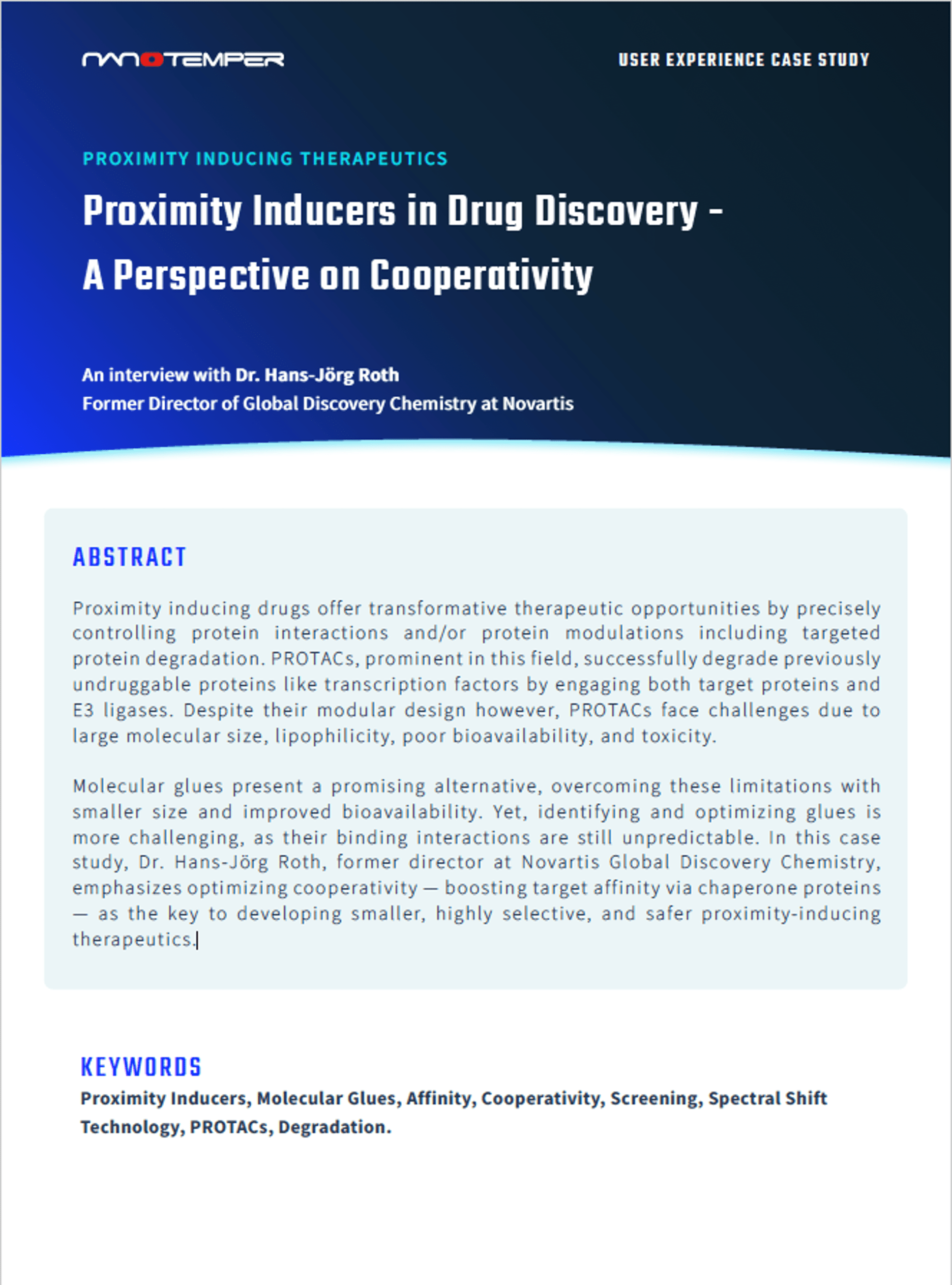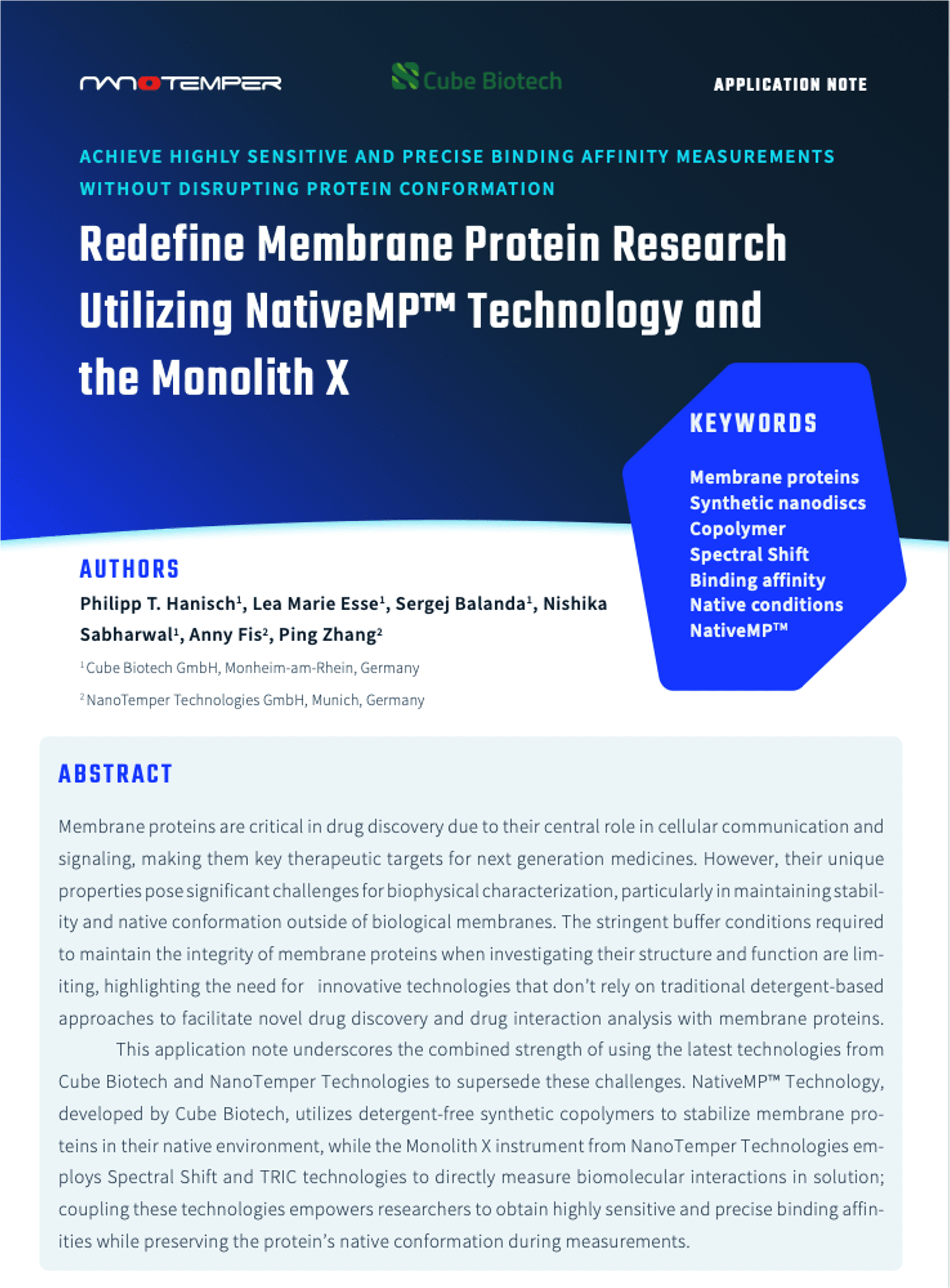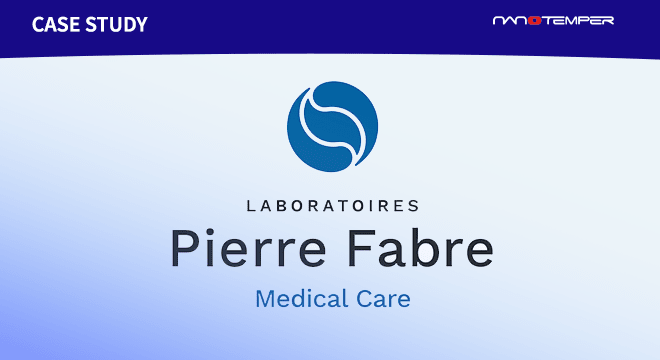The biophysical characterization of integral membrane protein stability is often challenging due to several factors: First, the expression and purification of membrane proteins is often impeded by low expression levels and protein stability. As a result, yields are usually low and do not allow for a thorough analysis or a screening approach to determine optimal conditions. Second, the use of detergents – which are necessary to solubilize membrane proteins – often introduces artifacts and other secondary effects, and most importantly precludes the use of reporter dyes to monitor protein unfolding. Label free methods – such as DSC or CD spectroscopy – on the other hand require large quantities of proteins, and are limited in throughput.
Here we use the 10 transmembrane-helix protein HiTehA, a protein of the slow anion channel family, to present label-free, native DSF as the method of choice to perform rapid and precise detergent screening projects for a solubilized membrane protein.







